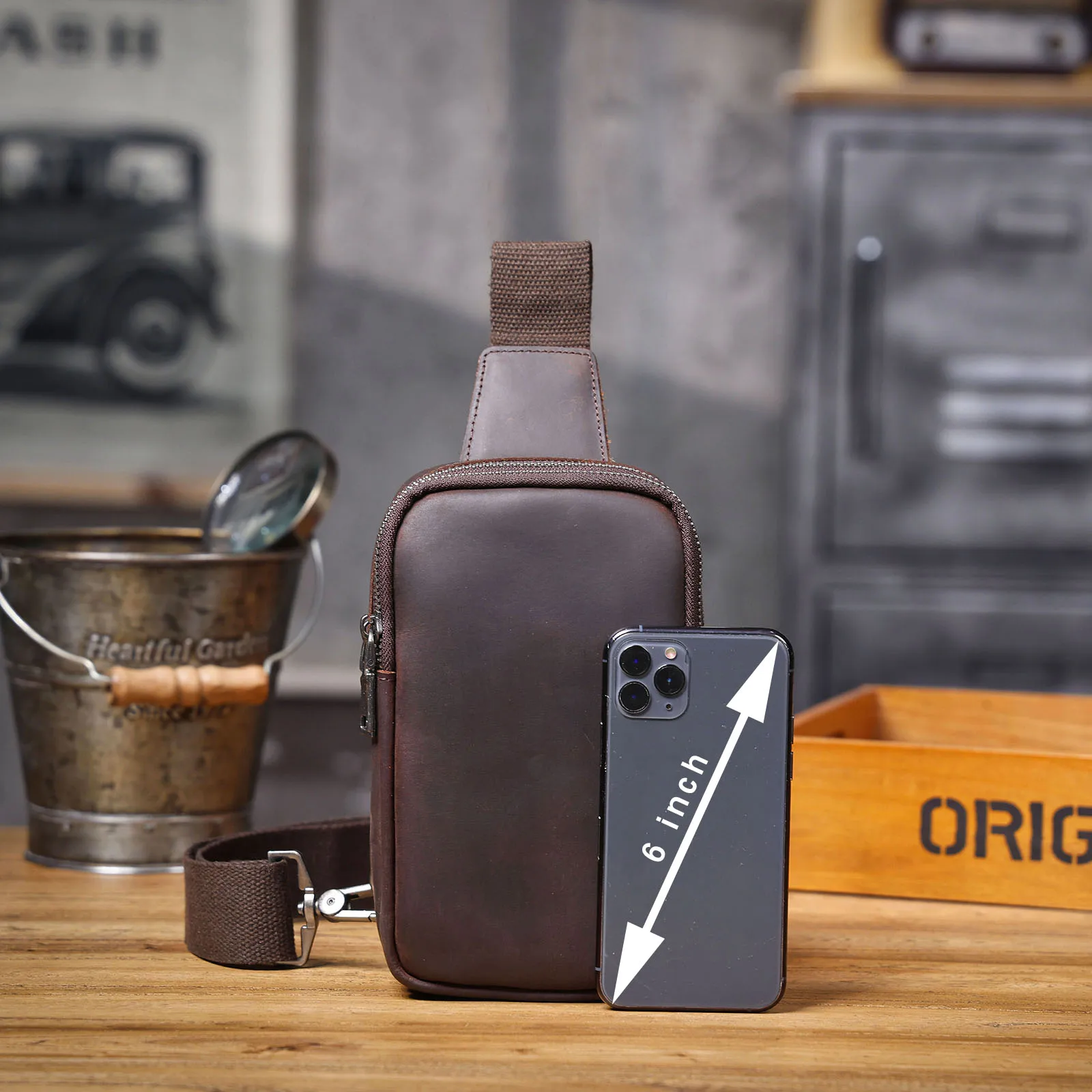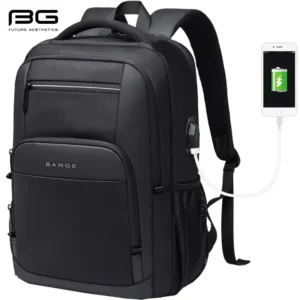The Art of Efficient Leather Day Bag Organization
A leather day bag represents more than just a fashion accessory—it’s a daily companion that carries your essentials while making a statement about your style. These compact yet versatile bags, designed to accompany you through daily activities, deserve thoughtful organization to maximize their utility and preserve their quality.
Proper organization of your leather day bag delivers immediate benefits to your daily routine. When items have designated places, you save precious minutes that add up significantly over time—approximately 5 minutes saved daily translates to over 30 hours annually! Beyond time efficiency, an organized bag reduces the stress of frantically searching for keys or other essentials when you’re already running late.
However, leather day bag owners commonly face several challenges:
- Difficulty locating items quickly in a disorganized space
- Preventing damage to the premium leather material (a significant concern considering quality leather day bags typically represent a $150-800 investment)
- Maintaining the bag’s elegant shape through proper weight distribution
The techniques outlined in this guide will help you master the dual goals of efficient organization and leather protection, ensuring your versatile leather bags men remain functional and beautiful for years. Whether you’re carrying a structured briefcase or one of our premium leather backpacks, these principles will enhance your daily experience.
Benefits of Strategic Leather Day Bag Packing
Strategic packing of your leather day bag offers a powerful trio of benefits that enhance both your daily experience and the longevity of your investment:
Efficiency Benefits
- Quick retrieval: Find what you need in seconds rather than digging frantically
- Reduced daily stress: Eliminate the frustration of misplaced essentials
- Professional impression: Present a composed, organized image when retrieving items in professional settings
Protection Benefits
- Interior preservation: Prevent scratches and stains on the leather’s interior lining
- Structural integrity: Reduce strain on seams and stress points through balanced packing
- Accident prevention: Minimize risk of spills and leaks through proper placement of liquids
Longevity Benefits
- Shape maintenance: Preserve the bag’s elegant contours by preventing overstretching
- Wear pattern prevention: Distribute weight evenly to avoid concentrated wear areas
- Hardware protection: Reduce stress on handles, straps, and closures
Well-organized leather bags typically last 10-20 years with proper care, compared to just 2-5 years when poorly maintained. This dramatic difference highlights why mastering organization leather bag techniques isn’t merely about convenience—it’s about protecting a significant investment.
Pre-Packing Assessment: Essential Preparation
Before filling your leather day bag, a proper assessment creates the foundation for successful organization. This preparatory stage helps prevent common packing mistakes and ensures you’re ready for the day ahead.
Complete Emptying Routine
Start with a completely empty bag, removing even items you typically carry daily. This practice, ideally performed daily or at minimum weekly, prevents forgotten items from accumulating and gives you a fresh organizational start.
Needs Evaluation
Consider your upcoming day’s activities:
– What meetings or events are scheduled?
– Will weather conditions require additional items?
– How long will you be away from home or office?
– Which technology or documents must you carry?
Leather Condition Check
Examine both the interior and exterior of your bag:
– Look for any new scratches or marks that need attention
– Check for spots that might need cleaning
– Ensure all hardware functions properly
– Inspect seams and stress points for any signs of strain
Weight Consideration
Be mindful of your bag’s total weight to preserve its structure. A day bag should generally not exceed 5-8 pounds (2.2-3.6 kg) or approximately 10-15% of your body weight to prevent excessive strain on the leather and carrying straps.
Pre-Packing Checklist
- [ ] Fully empty bag contents
- [ ] Clean interior with appropriate leather-safe cloth
- [ ] Assess day’s requirements and list necessary items
- [ ] Inspect bag condition and address any issues
- [ ] Gather organizational tools needed (pouches, etc.)
- [ ] Set out all items to pack before beginning
This thoughtful preparation stage is particularly important for small leather backpack options where space optimization becomes crucial due to limited capacity.
Core Packing Techniques for Optimal Space Utilization
Mastering space utilization in your leather day bag requires strategic placement rather than random stuffing. These core techniques ensure you maximize capacity while maintaining organization:
Bottom-to-Top Layering Method
Place heavier, less frequently accessed items at the bottom of your bag:
1. Position books, notebooks, or tablets flat against the bottom
2. Layer mid-weight items like small electronics or pouches in the middle
3. Keep lightweight, frequently accessed items (phone, wallet, keys) near the top
This approach creates a stable base while keeping everyday essentials within easy reach.
Center-Weighted Distribution
Concentrate weight in the center of your bag rather than the sides:
1. Place the heaviest items in the center of the bag
2. Position lighter items around the perimeter
3. Use soft items like scarves or light clothing to fill gaps between rigid objects
This distribution prevents the bag from bulging awkwardly and maintains its elegant silhouette.
Vertical vs. Horizontal Storage
Match your storage orientation to your bag’s design:
– For tall, narrow bags: Stack items vertically (one atop another)
– For wider, shallower bags: Arrange items horizontally (side by side)
– For notebooks or documents: Store them parallel to the flattest surface of the bag
Compartment Utilization
Optimize each compartment based on its characteristics:
– Small front pockets: Keys, transit cards, or lip balm
– Padded sections: Electronic devices or delicate items
– Zippered interior pockets: Valuable items requiring security
– Main compartment: Larger items arranged by frequency of use
These techniques are particularly valuable when your leather bag transitions between different settings, as highlighted in our guide to leather backpacks transition day night which emphasizes versatility in packing approaches.
Essential Organizational Tools for Leather Day Bags
The right organizational tools transform even a basic leather day bag into an efficiently packed masterpiece. These accessories not only maximize space but also protect your leather investment.
Small Pouches and Containers
Tech Pouches
– Slim designs with elastic straps for cables, adapters, and small electronics
– Preferred materials: Felt or microfiber to avoid scratching devices
– Ideal size: 5-7 inches (12-18 cm) for day bag compatibility
Cosmetic/Personal Care Pouches
– Water-resistant interior lining to contain potential leaks
– Flat rather than bulky designs to preserve bag shape
– Clear panels for visibility without opening
Document Organizers
– Thin folios that maintain document integrity without adding bulk
– Card slots for business cards and small paper items
– Zipper closure to prevent papers from spilling into main compartment
Slim Wallet Alternatives
- Card holders carrying just 3-5 essential cards reduce bulk by 60-70% compared to traditional wallets
- Money clips with integrated card slots eliminate the need for separate cash storage
- Phone cases with card compartments can eliminate the need for a separate wallet entirely
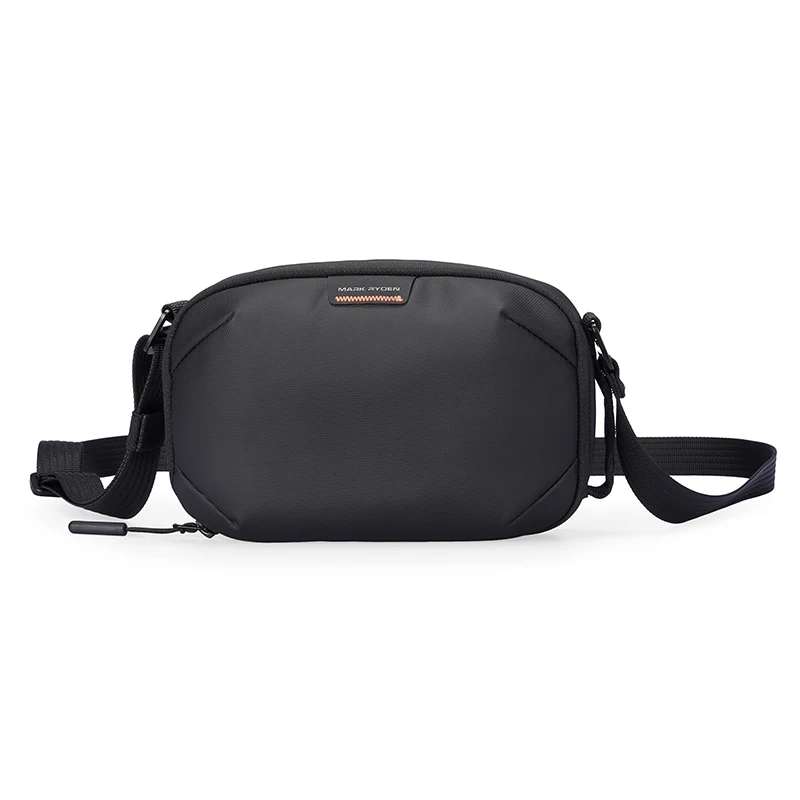
Cable Management Solutions
- Magnetic cable ties that keep cords neatly wrapped
- Cable organizers with multiple elastic loops for various chargers
- Earbud cases that prevent tangling and cable damage
Multi-Purpose Tools
- Collapsible containers that expand only when needed
- Convertible pouches that adapt to different contents
- Divider systems that can be reconfigured based on daily needs
When selecting organizational tools, prioritize slim profiles and soft materials that won’t scratch or stress your leather bag’s interior. For comprehensive guidance on maximizing these tools, our organizing leather backpack guide offers additional strategies for effective compartmentalization.
Leather Protection Strategies While Packing
Protecting your leather day bag while packing requires intentional strategies that prevent damage from both contents and carrying habits. These approaches ensure your investment maintains its beauty and structural integrity for years to come.
Interior Protection
The inside of your leather bag deserves as much protection as the exterior:
- Line the bottom with a soft microfiber cloth to prevent scratches from keys or metal objects
- Use dedicated pen sleeves rather than letting loose pens mark the interior
- Place potentially leaky items (water bottles, cosmetics) in waterproof pouches
- Consider a bag liner for vintage or particularly valuable leather bags
Structural Support Techniques
Maintain your bag’s elegant shape with these approaches:
- Follow the 80% capacity rule—never fill beyond 80% of available space to prevent stretching
- Use structured pouches that maintain their shape rather than irregular bundles
- Place rectangular items (notebooks, tablets) against the bag’s sides to reinforce its natural shape
- Remove unnecessary items daily to prevent chronic overstretching
Weight Distribution
Proper weight balance prevents premature wear:
- Distribute weight evenly across the bottom of the bag rather than concentrating in one area
- Alternate the shoulder you carry your bag on to prevent uneven wear on both the bag and your body
- For heavier loads, consider shifting to a backpack style if your leather day bag allows dual carrying options
Sharp Object Protection
Prevent punctures and scratches from everyday items:
- Cover keys with a dedicated key cover or pouch
- Place eyeglasses in protective cases rather than loose in compartments
- Position metal accessories away from delicate leather or suede sections
These protection strategies complement our detailed advice on protecting leather backpack from scratches, which emphasizes prevention rather than repair for maintaining leather quality.
Strategic Packing for Different Day Scenarios
Your leather day bag’s organization should adapt to different daily needs. Here’s how to pack strategically for three common scenarios:
Professional/Work Day Essentials
For the office or client meetings, prioritize efficiency and professional appearance:
- Main Compartment:
- Slim laptop or tablet (positioned against back panel)
- Notebook or planner (flat against the device)
- Document folder with important papers
Small pouch with tech accessories
Quick-Access Pockets:
- Business card holder
- Pen in dedicated holder (never loose)
- Phone in a scratch-free pocket
Keys in a leather key case
Additional Items:
- Slim water bottle (always in leak-proof container)
- Minimal personal care items (lip balm, hand sanitizer)
- Compact umbrella for weather uncertainty
In professional settings, emphasize minimalism and organization that allows you to retrieve items smoothly during meetings without disruption. Our leather work backpacks offer additional organizational features specifically designed for professional environments.
Casual Outing/Shopping Organization
For weekend errands or casual social gatherings, allow for more flexibility:
- Main Compartment:
- Small packable tote for unexpected purchases
- Sunglasses in protective case
- Light cardigan or scarf
Small water bottle
Quick-Access Pockets:
- Phone and slim wallet
- Keys with minimal keychain
- Hand sanitizer
Lip balm and compact mirror
Additional Items:
- Small snack in sealed container
- Portable phone charger
- Headphones in protective case
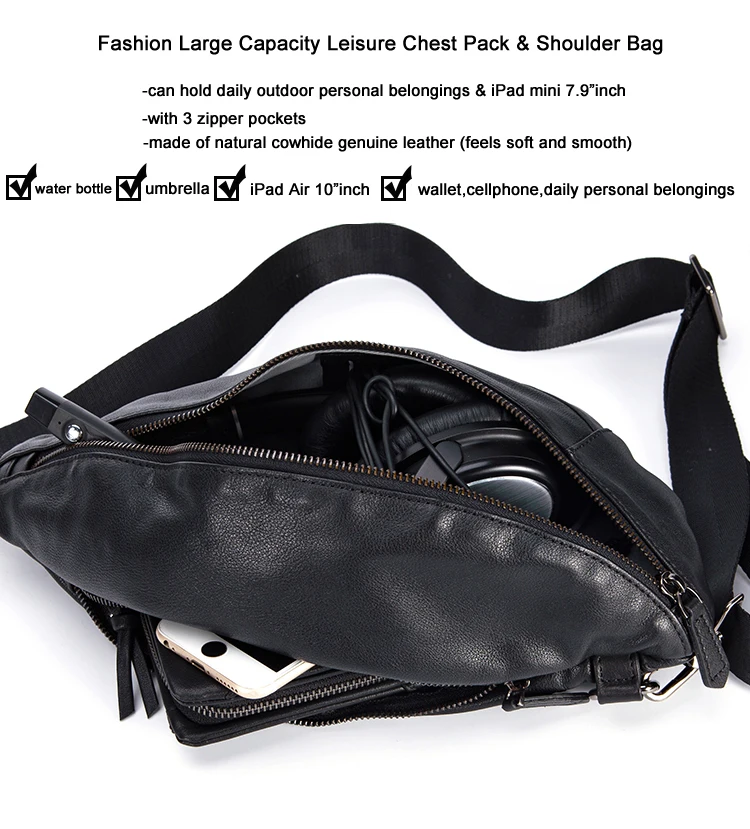
Day-to-Evening Transition Strategy
When your day extends into evening plans without time to return home:
- Main Compartment:
- Work essentials during day
- Convertible accessories for evening (jewelry, versatile scarf)
- Compact makeup kit for touch-ups
Foldable bag hook for restaurant settings
Quick-Access Pockets:
- Day essentials that remain constant (phone, keys, payment cards)
Evening essentials (lipstick, compact mirror)
Additional Items:
- Mini perfume/cologne
- Backup phone battery
- Small brush or comb
14 Inch Leather Laptop Backpack, Brown Leather Backpack, Men's Leather Backpack, Vintage Leather Backpack
Price range: $177.28 through $199.12 Select options This product has multiple variants. The options may be chosen on the product pageCarry On Leather Backpack, Roll Top Leather Backpack
Price range: $77.76 through $96.48 Select options This product has multiple variants. The options may be chosen on the product pageDesigner Men's Backpack, Men's Leather Laptop Backpack, Men's Leather Work Backpack
Price range: $158.04 through $160.04 Select options This product has multiple variants. The options may be chosen on the product pageBrown Leather Sling Backpack, Crossbody Leather Sling Backpack, Men's Leather Sling Backpack
Price range: $191.96 through $193.72 Select options This product has multiple variants. The options may be chosen on the product pageDesigner Mini Backpack, Mini Leather Backpack, Small Leather Sling Backpack, Women's Leather Backpack
Price range: $95.76 through $98.80 Select options This product has multiple variants. The options may be chosen on the product pageDesigner Mini Backpack, Designer Women's Backpack, Mini Leather Backpack, Women's Leather Backpack
Price range: $135.92 through $137.64 Select options This product has multiple variants. The options may be chosen on the product page
For each scenario, pack the night before when possible, ensuring your bag contents align precisely with your anticipated needs without unnecessary extras that add weight and bulk.
Quick-Access Design: Prioritizing Item Placement
Strategic item placement within your leather day bag ensures you can quickly retrieve essentials without frustration or delay. Think of your bag as having a three-tier accessibility system:
Three-Tier Accessibility Framework
Immediate Access (30-second retrieval)
– Phone
– Wallet or card holder
– Keys
– Transit pass or ID badge
– Lip balm or frequently used personal itemSecondary Access (under one minute)
– Sunglasses or reading glasses
– Hand sanitizer
– Notebook or planner
– Portable charger
– Tissues or wipesInfrequent Access (retrievable when seated)
– Laptop or tablet
– Makeup bag or grooming items
– Umbrella
– Water bottle
– Snacks or medications
Strategic Pocket Utilization
Match your bag’s pockets to these access tiers:
- External pockets: Reserve for tier-one items needing instant access
- Top interior sections: Designate for tier-two items
- Bottom or back compartments: Use for tier-three items rarely needed on the go
Consistency for Muscle Memory
Place items in the same location every day to develop retrieval muscle memory:
- Assign specific pockets for specific categories of items
- Maintain this system across different bags when possible
- Create a mental map of where everything belongs
This consistency drastically reduces the “Where is my…?” moment when you’re in a hurry. Many users of our multi-use leather backpacks report that consistent item placement transforms their daily efficiency.
Position Mapping to Prevent “Bag Digging”
Eliminate the frustration of searching by creating deliberate item positions:
- Position frequently paired items near each other (phone and earbuds)
- Keep potentially damaging items (keys) away from delicate ones (glasses)
- Store items upright when possible for easier identification by touch
Following these principles ensures you’ll spend less time searching and more time doing.
Common Packing Mistakes That Damage Leather Day Bags
Even quality leather bags can suffer premature wear when common packing mistakes go uncorrected. Avoid these errors to extend your bag’s lifespan significantly:
Overpacking Consequences
Problem: Stretching the leather beyond its natural capacity causes permanent deformation, weakened seams, and stressed hardware.
Solution: Follow the 80% rule—never fill your bag beyond 80% of its capacity. If you regularly need more space, consider a larger bag for those days rather than overstuffing your current one.
Evidence: Overpacked bags typically show stretched handles and distorted shapes within 6-12 months, while properly packed bags maintain their structure for years.
Improper Placement of High-Risk Items
Problem: Uncapped pens, loose keys, leaky water bottles, and uncovered sharp objects cause interior stains and scratches.
Solution: Use protective covers for all potentially damaging items:
– Key covers or pouches for keys
– Pen caps (always capped when stored)
– Leak-proof containers for all liquids
– Cases for glasses, electronics, and metal objects
Evidence: Interior stains from leaked liquids are among the most common yet preventable forms of damage to premium leather goods.
Ignoring Weight Balance
Problem: Consistently loading one side of your bag creates uneven wear, stretched handles, and asymmetrical shape distortion.
Solution: Distribute weight evenly across the bottom of the bag and rotate carrying sides regularly.
Evidence: Unbalanced bags develop visible wear patterns within months, while balanced packing preserves symmetry for years.
Forgetting Protective Barriers
Problem: Direct contact between items causes scratches, scuffs, and unnecessary friction damage.
Solution: Use soft dividers between potentially damaging items:
– Microfiber cloths between electronics
– Small pouches for separating items
– Padded cases for fragile items
Many customers find that crossbody leather sling backpack styles reduce some of these issues through their more structured compartmentalization, but proper packing habits remain essential regardless of bag style.
Daily Maintenance to Preserve Organization and Leather Quality
A simple daily maintenance routine ensures your leather day bag remains organized and beautiful for years. Just five minutes each evening delivers significant long-term benefits:
Evening Emptying and Assessment Routine
End each day by completely emptying your bag:
– Remove all items, even those you’ll carry again tomorrow
– Shake the bag gently upside down to remove crumbs or debris
– Wipe down the interior with a dry microfiber cloth
– Check for any spots, stains, or moisture that needs attention
This simple habit prevents accumulated lint, forgotten receipts, and potential leather damage from unnoticed spills.
Quick Cleaning Procedures
Maintain your bag’s interior and exterior with these quick steps:
– Use a dedicated leather-safe cloth for exterior wiping
– Address any water spots or marks immediately
– Clean hardware with a dry cloth to remove fingerprints
– Apply leather conditioner monthly (or as recommended for your specific leather type)
Organization Reset Techniques
Before repacking for the next day:
– Evaluate which items are actually necessary
– Clean or refill any personal care products
– Return borrowed items to their proper homes
– Restock essentials that are running low
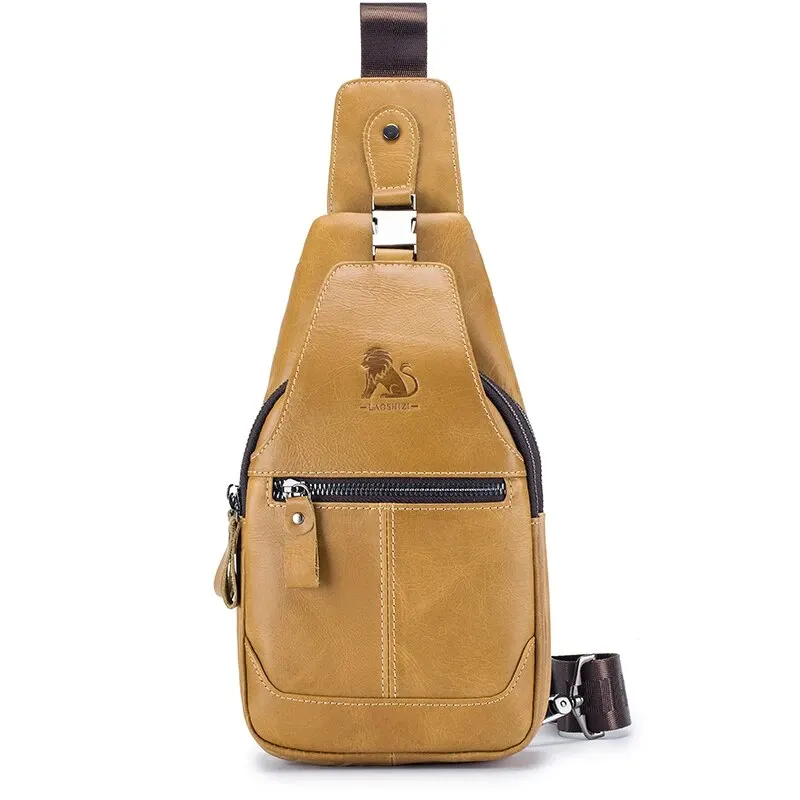
Weekly Deeper Organization
Once weekly, perform a more thorough maintenance:
– Clean organizational pouches and containers
– Discard unnecessary papers and receipts
– Rotate frequently carried items to prevent wear patterns
– Check bag structure for any developing issues
5-Minute Evening Maintenance Checklist
- Empty all contents completely
- Wipe interior with appropriate cloth
- Check for and address any spills or marks
- Air bag with compartments open for 30 minutes
- Prepare essentials for next-day packing
These habits ensure your mens leather backpack or day bag remains in excellent condition, extending its useful life while maintaining optimal organization.
Supplemental: Adapting These Techniques to Different Leather Bag Styles
While the core principles of leather bag organization remain consistent, specific bag styles benefit from tailored approaches:
Structured vs. Soft Leather Bags
| Aspect | Structured Bags | Soft Leather Bags |
|---|---|---|
| Packing Pattern | Rectangular, precise placement | Layer-based, more flexible |
| Interior Protection | Less padding needed between items | Additional padding recommended |
| Weight Distribution | Even distribution critical | Can adapt to contents more easily |
| Organization Tools | Rigid organizers work well | Soft, flexible pouches preferred |
| Capacity Limits | Strict adherence to capacity limits | Slightly more forgiving, but still avoid overpacking |
Structured bags maintain their shape regardless of contents, making them excellent for professional settings but less forgiving when overpacked. Soft leather bags conform more to their contents but may require additional interior protection to maintain their shape over time.
Adapting for Different Opening Styles
Top-Zip Bags
– Organize vertically with most-used items near the top
– Use pouches that stack efficiently
– Prioritize quick-access items near the opening
Flap-Over Designs
– Arrange items horizontally beneath the flap
– Secure smaller items that might fall out when flap is open
– Use the outer pockets for truly immediate-access needs
Drawstring or Bucket Styles
– Employ more internal organization tools to prevent items from mixing
– Place small items in pouches to prevent them sinking to the bottom
– Consider top-access pouches for essentials
For vintage or particularly delicate leather items like those in our vintage leather backpack collection, add extra protection between items and avoid overpacking to preserve their historical character and aging leather.
Supplemental: Seasonal Adjustments for Your Leather Day Bag Contents
Your leather day bag’s contents should adapt to seasonal challenges to maintain both organization and leather protection:
Winter Packing Considerations
Winter presents unique challenges for leather day bags:
– Carry a small microfiber cloth to wipe away moisture from snow or rain
– Add leather protector more frequently during wet winter months
– Keep potentially wet items (umbrella, gloves) in waterproof pouches
– Position electronics away from areas exposed to temperature changes
– Consider a bag with zipper closure rather than open-top styles
The greatest winter threat to leather comes from salt and slush, which can cause permanent staining and leather breakdown if not promptly addressed.
Summer Organization
Summer heat and activities require thoughtful organization:
– Store sunscreen and lotions in leak-proof containers (summer heat can cause expansion)
– Position electronics away from direct sunlight when bag is set down
– Include a dedicated pouch for potentially sweaty items
– Keep water bottles in insulated containers to prevent condensation
– Apply leather conditioner more frequently in dry, hot climates
Sunscreen presents a particular risk to leather interiors, as its oils can permanently stain even treated leather.
Transitional Season Adjustments
Spring and fall require flexibility:
– Include slim, packable layers for temperature changes
– Maintain a dedicated umbrella pocket for unexpected showers
– Use a removable bag organizer that can be adjusted as seasonal needs change
– Position weather-dependent items for quick access
For those who travel frequently between environments, our city travel small leather bags offer additional features designed for variable conditions and seasonal versatility.
Supplemental: Is It Worth Investing in Premium Organizational Tools?
The question of whether to invest in specialized organizational tools depends on several factors:
Cost-Benefit Assessment
Consider these guidelines when deciding on organizational investments:
- Basic Necessities (Worth It for Everyone)
- Water-resistant pouches for liquids ($10-15)
- Basic cable organizers ($5-15)
- Simple key covers ($8-20)
These fundamental items prevent common damages that can cost hundreds to repair or replace.
- Mid-Range Investments (Value Depends on Usage)
- Custom-sized bag organizers ($25-45)
- Premium tech organizers ($20-40)
- Leather accessory pouches ($30-60)
These become increasingly valuable for daily bag users and those carrying valuable electronics.
- Premium Specializations (For Dedicated Users)
- Custom-fitted bag inserts ($60-120)
- Full organizational systems ($75-150)
- Luxury accessory collections ($100+)
These make sense primarily for expensive bags ($400+) or professionals whose efficiency directly impacts productivity.
DIY vs. Commercial Solutions
Many organizational needs can be addressed through creative repurposing:
– Clean makeup bags make excellent tech organizers
– Eyeglass cases work well for small accessories
– Cloth napkins provide excellent padding between items
However, purpose-built solutions typically last longer and provide better protection for your leather investment. The most valuable organizational tools are those that address your specific carrying patterns and prevent damage to your particular bag style.
